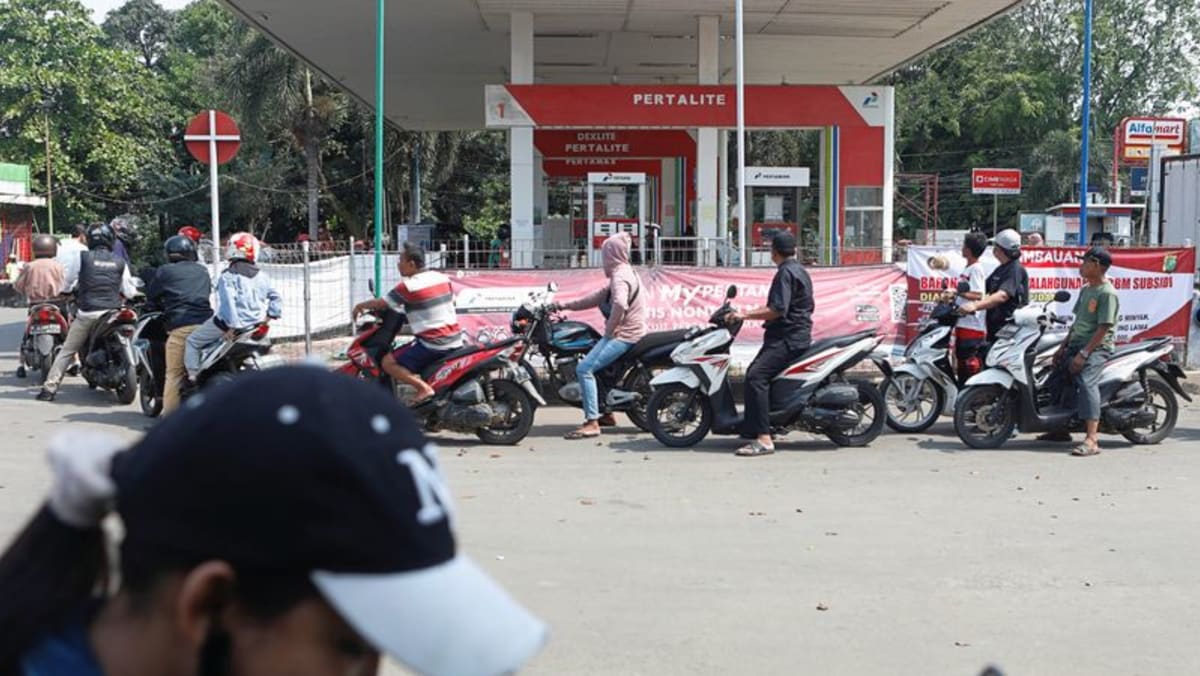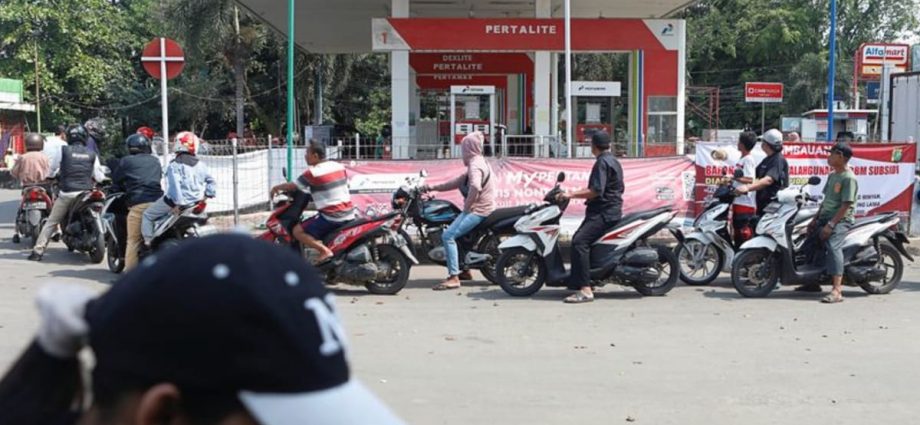
JAKARTA: Indonesian President Joko Widodo on Saturday (Sep 3) raised some fuel prices by around 30 per cent to contain ballooning spending on energy subsidies in Southeast Asia’s biggest economy.
The move risks sparking protests and further fanning price pressures, though analysts saw a need to act to ensure fiscal discipline.
WHAT HAS BEEN DECIDED ON FUEL PRICES?
Indonesia raised the price of its most popular 90-octane gasoline, known as Pertalite, to 10,000 rupiah (US$0.6714) per litre, up from 7,650 rupiah. The finance ministry said state energy firm Pertamina’s production costs for this type of fuel was 14,450 rupiah per litre.
The price of diesel rose to 6,800 rupiah per litre, from 5,150 rupiah, compared with a production cost of 13,950 rupiah.
Jokowi, as the president is popularly known, also hiked the price of 92-octane gasoline, known as Pertamax, to 14,500 rupiah per litre, from 12,500 rupiah. Pertamina does not receive compensation for losses in Pertamax sales.
WHY RAISE FUEL PRICES NOW?
The government has already tripled its energy subsidy spending this year from the original budget to 502.4 trillion rupiah (US$33.83 billion) to keep subsidised fuel prices and some power tariffs unchanged amid high global energy prices.
This has resulted in a widening price disparity between subsidised and non-subsidised fuel, prompting consumers to switch to cheaper fuels.
Some economists have said raising fuel prices this year would reduce the risk of spending overruns in 2023 when the government must lower its fiscal deficit to below 3 per cent of GDP.
WHY IS HIKING FUEL PRICES CONTROVERSIAL?
Fuel prices are a politically sensitive issue in Indonesia and with subsidised fuels making up more than 80 per cent of Pertamina’s sales, the changes will have major implications for households and small businesses.
Big companies are not allowed to buy subsidised fuels for their operations.
Previous price increases had led to mass protests across the archipelago, including when Jokowi last raised fuel prices in 2014.
The current price hike comes at a time when food prices are already trending up. August inflation was 4.69 per cent, above the central bank’s target range for three months in a row.
The government has this week started to distribute cash from a US$1.6 billion additional social protection fund to cushion price pressures for the poor.
Elections are set to be held in 2024.
HOW WILL THE MEASURES IMPACT INFLATION, GDP?
Pertamina has estimated a 30 per cent to 40 per cent increase in fuel prices could add 1.9 percentage point to inflation in 2022, but this assumed a bigger increase in some prices.
Some economists and business groups think inflation could pick up to around 6 per cent by the end of the year, putting pressure on the central bank to tighten monetary policy more quickly.
Bank Indonesia (BI) raised interest rates on Aug 23 for the first time since 2018 in a move analysts said was to pave the way for the fuel price hike announcement. BI is still well behind most peers in its roll back of pandemic-era stimulus and economists expect more hikes.
The potential reduction in purchasing power and higher interest rates could hurt economic growth. The government targets 2022 GDP growth at 5.2 per cent.
WHAT HAPPENS TO SUBSIDY BUDGET NOW?
Finance Minister Sri Mulyani Indrawati said even with the fuel prices increase, the government’s energy subsidy spending would still swell.
She estimated energy subsidy allocation this year will range between 591 trillion rupiah to 649 trillion rupiah after the price hike, assuming the Indonesia Crude Price moves between US$85 to US$100 per barrel for the remainder of the year.
The government may shift about 100 trillion rupiah of subsidy payments to 2023, pending parliamentary approval, Sri Mulyani said.
She did not give any assessment on how the price hike would affect the 2022 budget deficit outlook. Her latest forecast was for a fiscal gap equivalent to 3.92 per cent of GDP.

